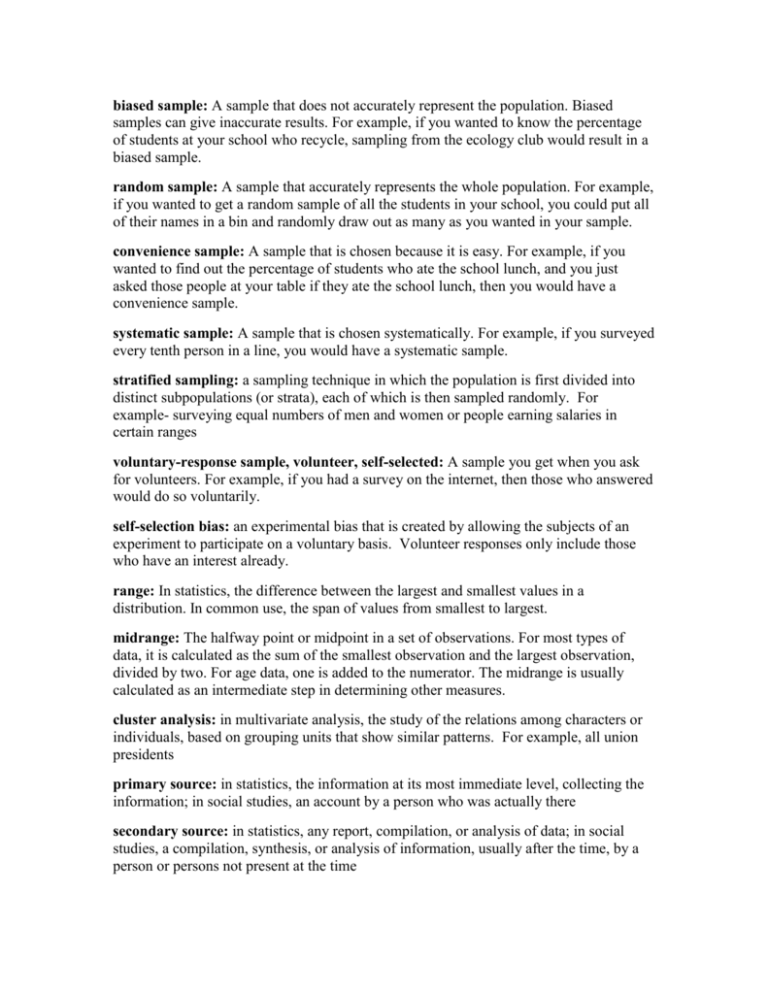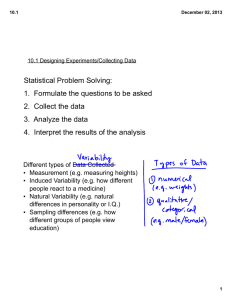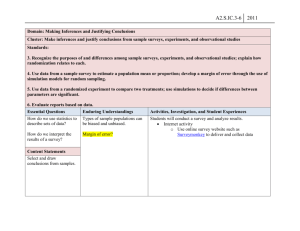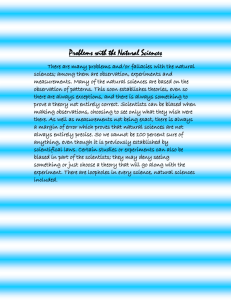A sample that does not accurately represent the population
advertisement

biased sample: A sample that does not accurately represent the population. Biased samples can give inaccurate results. For example, if you wanted to know the percentage of students at your school who recycle, sampling from the ecology club would result in a biased sample. random sample: A sample that accurately represents the whole population. For example, if you wanted to get a random sample of all the students in your school, you could put all of their names in a bin and randomly draw out as many as you wanted in your sample. convenience sample: A sample that is chosen because it is easy. For example, if you wanted to find out the percentage of students who ate the school lunch, and you just asked those people at your table if they ate the school lunch, then you would have a convenience sample. systematic sample: A sample that is chosen systematically. For example, if you surveyed every tenth person in a line, you would have a systematic sample. stratified sampling: a sampling technique in which the population is first divided into distinct subpopulations (or strata), each of which is then sampled randomly. For example- surveying equal numbers of men and women or people earning salaries in certain ranges voluntary-response sample, volunteer, self-selected: A sample you get when you ask for volunteers. For example, if you had a survey on the internet, then those who answered would do so voluntarily. self-selection bias: an experimental bias that is created by allowing the subjects of an experiment to participate on a voluntary basis. Volunteer responses only include those who have an interest already. range: In statistics, the difference between the largest and smallest values in a distribution. In common use, the span of values from smallest to largest. midrange: The halfway point or midpoint in a set of observations. For most types of data, it is calculated as the sum of the smallest observation and the largest observation, divided by two. For age data, one is added to the numerator. The midrange is usually calculated as an intermediate step in determining other measures. cluster analysis: in multivariate analysis, the study of the relations among characters or individuals, based on grouping units that show similar patterns. For example, all union presidents primary source: in statistics, the information at its most immediate level, collecting the information; in social studies, an account by a person who was actually there secondary source: in statistics, any report, compilation, or analysis of data; in social studies, a compilation, synthesis, or analysis of information, usually after the time, by a person or persons not present at the time











